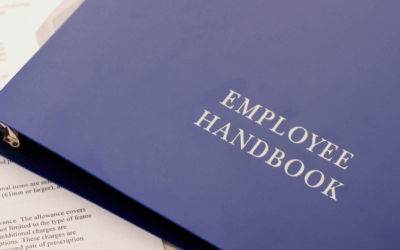Succession planning is a structured process for identifying critical positions, grooming future leaders, and safeguarding business continuity—so your company can survive promotions, retirements, or the “5 Ds” (death, disability, divorce, disagreement, distress) without missing a beat. For small and midsize businesses—70 percent of which are family- or founder-led—the sudden loss of a key player can freeze sales, spook investors, and drain hard-won culture overnight.
This guide puts a practical, SMB-friendly spin on a topic often treated like corporate rocket science. You’ll get a clear seven-step roadmap that links talent decisions to growth goals, shows you how to spot hidden successors, and hands you ready-to-use checklists, templates, and examples. Read on, grab what you need, and start building a bench that’s strong enough to protect today’s momentum and power tomorrow’s expansion. Along the way, we’ll flag common pitfalls, highlight budget-smart tools, and show where expert help can save you months of trial and error.
Step 1: Align Succession Planning with Your Business Strategy
Before you fill out grids or brainstorm names, anchor the entire succession planning strategy to where the business is headed. A family-owned manufacturer chasing a 40 % growth target needs a deeper leadership bench than a professional-services firm prepping for an owner exit in three years. When succession goals mirror business objectives, development dollars land on the right people and leadership transitions feel like part of the plan—not a fire drill.
Why SMBs Can’t Ignore Succession Risk
- A single vacant key role can slash revenue up to 10 % in the first quarter, according to SHRM benchmarking data.
- Buyers and investors discount valuation when “key-person risk” shows up in due-diligence checklists.
- Regulatory fines, missed contract SLAs, and shaken customer trust pile on if no one can approve payroll or sign off on safety audits.
In short, the bill for ignoring succession risk is far higher than the cost of putting a plan in place.
Secure Cross-Functional Ownership
Succession can’t live in an HR document nobody reads. Form a small steering committee that meets at least quarterly:
- CEO or founder (sponsor and final decision maker)
- CFO/COO (ties talent spends to financial outlook)
- HR lead or outsourced HR partner (process owner)
- Two to three department heads with critical roles on the line
Clarify decision rights (e.g., the committee green-lights successor slates, HR manages data) and set a recurring 60-minute cadence. Visible leadership buy-in signals to employees that succession is real, not rumor mill fodder.
Translate Strategy into Succession Goals
Take each strategic pillar, spell out the capabilities it demands, and attach a measurable talent target. The snapshot below shows how easy that linkage can be.
| Strategic Goal | Critical Capability | Affected Role(s) | Succession KPI |
|---|---|---|---|
| Enter two new regional markets | Multi-site operations expertise | VP Operations, Regional Manager | 2 “Ready Now” successors per role by Q4 2026 |
| Launch AI-enabled product line | Data science leadership | Lead Engineer, Product Director | 1 internal successor identified; external bench sourced by Q2 2025 |
| Reduce COGS by 8 % | Lean-process mastery | Plant Manager | Successor readiness score ≥ 80 % within 12 months |
Finally, convert the table into SMART objectives, e.g., “Within 18 months, build two ‘Ready Soon’ successors for every VP-level role.” With that north star in place, the remaining six steps become tactical moves rather than guessing games.
Step 2: Identify Critical Roles and Future Skills
With the destination locked in, the next move is figuring out which seats you absolutely cannot afford to leave empty—and what new skills those seats will require tomorrow. Skipping this step is like buying insurance without listing what you’re insuring. A clear, prioritized roster keeps your succession planning strategy focused and budget-friendly.
Start with a blank spreadsheet and rate every key position on two axes: business impact and vacancy risk. High-impact, high-risk roles jump to the top of your planning queue.
Map Current Mission-Critical Positions
- List all leadership and specialist roles.
- For each, assign an Impact score (1–3) based on revenue, compliance, or customer dependency.
- Assign a Vacancy Risk score (1–3) based on turnover history, retirement horizon, and internal bench.
- Multiply the two scores to get a Priority Index.
Priority Index = Impact × Vacancy Risk
Anything scoring 6 or higher deserves an immediate successor plan. Don’t overlook “hidden linchpins” like your payroll lead or master machinist—roles whose expertise lives mostly in their heads.
Anticipate Emerging Needs
Today’s critical job may look different in 18 months. Review market trends and strategic projects and list capabilities you’ll need but don’t yet have, such as:
- AI-assisted decision making
- Remote-team leadership
- Compliance with new data-privacy rules
Tag these as “future critical” so you can start cultivating talent before demand outpaces supply.
Document Vacancy Scenarios with the “5 Ds”
A great succession planning strategy prepares for both planned departures and bolt-from-the-blue exits. Walk each high-priority role through the “5 Ds” lens:
- Death – Who signs paychecks tomorrow?
- Disability – What systems access must be transferred within 24 hours?
- Divorce – Could ownership changes affect control rights?
- Disagreement – What if the COO resigns mid-product launch?
- Distress – How will financial turmoil change leadership needs?
Assign a risk owner (often the role’s manager) to maintain up-to-date contingency notes—password vaults, vendor contacts, interim decision makers.
By quantifying impact, forecasting future skills, and scenario-planning against the 5 Ds, you create a living heat map of where your organization is most vulnerable. That map becomes the backbone for Steps 3–5, ensuring development dollars hit the roles that truly keep the lights on.
Step 3: Build Success Profiles and Competency Frameworks
Traditional job descriptions look backward (“5-10 years of X”) and list every task under the sun. A sharp succession planning strategy flips the lens: it focuses on the few competencies that will matter most when the job’s business impact peaks one, three, or five years from now. The output is a “success profile” backed by a lightweight competency framework—lean enough for an SMB budget, sturdy enough to steer development plans.
Craft Role-Based Success Profiles
Start with the critical roles flagged in Step 2 and capture only what drives results. A simple one-page profile keeps managers and successors on the same wavelength.
| Section | Guiding Questions | Example (Plant Manager) |
|---|---|---|
| Purpose | Why does this role exist? | “Deliver 95% OEE and 8% COGS reduction.” |
| Key Outcomes (KPIs) | What must be achieved? | OEE ≥ 95, Scrap ≤ 1%, Safety Incidents = 0 |
| Technical Skills | Non-negotiable hard skills? | Lean Six Sigma Black Belt, ERP mastery |
| Leadership Behaviors | How must they lead? | Data-driven coaching, calm under pressure |
| Culture Alignment | Which core values matter most? | “Own the result,” “Protect each other” |
Keep wording action-oriented and measurable; successors should instantly see the finish line.
Develop a Lightweight Competency Model for SMBs
Skip the 60-page HR binders. A three-tier model covers 90 % of what you need:
- Core (applies to everyone)
- Integrity, collaboration, learning agility
- Leadership (applies to managers and up)
- Strategic thinking, talent development, financial acumen
- Functional (role-specific)
- E.g., FDA compliance for a Quality Director, Kotlin for a Mobile Lead
Map each competency to proficiency levels—Foundational, Proficient, Expert—so you can gauge where a successor stands and what “ready” looks like.
Embed Diversity, Equity & Culture Fit
Competency language shapes your talent pool. Test every success profile for hidden bias:
- Replace vague “executive presence” with observable behaviors (“presents complex data clearly to non-experts”).
- Include culturally additive traits—courage to challenge groupthink, network-building across differences.
- Use diverse interview panels when validating profiles.
By grounding each key position in a forward-looking success profile and a concise competency framework, you give your succession planning strategy a common vocabulary. Managers know what excellence looks like, HR can design targeted learning, and high-potential employees see a transparent path to the next big role. Total time investment for an SMB? About two focused hours per role—well worth the risk insurance gained.
Step 4: Assess and Select Potential Successors
With roles and competencies locked, the next move is figuring out who can actually step in—and when. A disciplined assessment cycle, run every six or twelve months, keeps your succession planning strategy current and unbiased. Aim to rate each candidate on two dimensions: past performance and future potential. The output is a clear “bench map” that guides development dollars and calms board nerves when they ask, “Who’s up next?”
Establish Fair, Data-Driven Assessment Criteria
Ditch gut feelings. Combine multiple signals so every candidate is judged on the same playing field.
- Performance metrics: last 18-24 months of KPIs, 360° feedback scores, and compliance records.
- Potential indicators: learning agility, strategic thinking, emotional intelligence, and values alignment.
- Readiness categories:
- Ready Now – can assume the role within 3 months
- Ready Soon – 12-18 months of stretch needed
- Ready Later – 2+ years out or needs different experiences
Create a simple scoring sheet (1–5 scale per factor) and weight categories to reflect business priorities, e.g., technical mastery 40 %, leadership behaviors 30 %, culture fit 30 %.
Total Score = Σ(weight × rating)
Document rationale in plain language for transparency and legal safety.
Run Talent Review Sessions & Nine-Box Grids
- Managers pre-populate assessments and submit evidence.
- HR consolidates data and highlights discrepancies.
- A calibration meeting compares candidates across departments to curb bias.
- Use a nine-box grid (Performance × Potential) to visualize bench strength and spot stars vs. risks.
| High Potential | Moderate | Low | |
|---|---|---|---|
| High Performance | A | B | C |
| Moderate | D | E | F |
| Low | G | H | I |
Discuss action plans for each box: “A” players get succession paths; “F” players need coaching or exit plans. Close the loop by meeting one-on-one with every employee to share development feedback—no black-box reputations allowed.
Include External Bench Options
Sometimes the grid shows a blank square. If no internal “Ready Soon” exists:
- Define critical gaps and craft an external talent profile mirroring your success profile.
- Engage targeted recruiters or build talent communities on LinkedIn to keep passive candidates warm.
- Consider interim leadership or fractional executives to bridge unforeseen vacancies.
Building an external bench isn’t an admission of failure; it’s the difference between a smooth handoff and a frantic job posting when the 5 Ds strike. Pair that external pipeline with your internal assessments, and your succession planning strategy gains the resilience SMBs can’t afford to ignore.
Step 5: Design Development Plans and Knowledge Transfer Methods
Identifying successors is only halftime; the win comes when those high-potential employees can actually step into the role and keep the business humming. Think of this step as the training montage in a sports movie: deliberate practice, real-world reps, and a coach who refuses to let talent plateau. A solid development and transfer program turns “Ready Soon” into “Ready Now,” shrinks time-to-fill metrics, and protects institutional know-how that’s too valuable to live in a single inbox.
Craft Individual Development Plans (IDPs)
Skip the vague “take a leadership course” directive. Each successor gets an IDP built on the 70-20-10 framework:
- 70 % experiential (projects, stretch roles)
- 20 % social (mentoring, peer coaching)
- 10 % formal (classes, certifications)
Sample SMART objective: “By Q4 2025, lead the cross-plant Kaizen event to cut scrap by 2 %, then present outcomes to the executive team.” The goal is specific, measurable, tied to business impact, and time-boxed—everything a busy SMB needs for accountability.
Provide Stretch Assignments and Acting Roles
Classroom hours alone won’t build leadership muscle. Give successors temporary authority where results are visible:
- Cover the department during a manager’s parental leave.
- Own P&L for a pilot product line.
- Lead the annual budget cycle with CFO oversight.
Document expectations upfront, appoint a “sponsor” to coach in real time, and debrief afterward. These bite-size trials create proof points for boards and investors wary of untested talent.
Capture Institutional Knowledge Before It Walks Out
Even the best successor can’t fake tribal wisdom—so bottle it while you can.
- Pair departing or senior leaders with protégés in a six-month mentorship sprint focusing on critical processes.
- Schedule job-shadow days where successors observe key negotiations, safety audits, or client QBRs.
- Translate tacit know-how into tangible assets: SOP checklists in a shared drive, video walk-throughs of proprietary setups, or a living wiki updated quarterly.
Use a simple tracker—task, owner, due date—to make sure knowledge capture doesn’t slide to “someday.” When the inevitable handoff arrives, your successor starts on second base instead of in the parking lot.
Thoughtful IDPs, real-world stretch roles, and disciplined knowledge capture move your succession planning strategy from paper exercise to operational insurance—all without ballooning headcount or budgets.
Step 6: Implement the Plan and Integrate with Everyday HR Processes
A binder full of nine-box grids won’t keep the lights on; execution will. At this point your succession planning strategy should flow through every routine people process—just like safety or payroll accuracy. When development, hiring, performance reviews, and even bonus conversations reflect bench-strength goals, successors see a clear runway and busy managers remember why the extra coaching time matters.
Embed KPIs in leadership scorecards (e.g., “retain two ‘Ready Soon’ managers” or “close XYZ competency gap”). Link bonus eligibility or profit-share multipliers to those targets so leaders prioritize talent health alongside revenue.
Sync with Hiring and Onboarding
- Treat the success profile as a hiring scorecard. If a role lacks an internal bench, Recruiting flags it “Succession Priority” and sources candidates who already meet 70 % of future-ready competencies.
- During onboarding, new hires receive visibility into the succession roadmap and the competencies that will fast-track them to critical roles.
- Quarterly workforce planning reviews compare open requisitions against the succession heat map to prevent surprise gaps.
Communicate Transparently to Boost Engagement
People fear secret lists. Diffuse anxiety with a two-tier communication plan:
- Company-wide: Share the purpose of succession planning, how it benefits job security, and the process timeline.
- Individual: Managers discuss readiness status and development actions in one-on-one meetings.
Sample FAQ cue card: “Does being named a successor guarantee promotion?” (Answer: No, performance and business need drive timing.)
Build an Emergency Backup Plan
Not every exit is predictable, so create a one-page “Break Glass” sheet for each critical role:
| Field | Example Entry |
|---|---|
| Interim Decision Maker | Senior Controller |
| Systems & Password Vault | LastPass Folder: “Finance-Exec” |
| Key External Contacts | Bank Rep: 555-1234, Auditor: audit@firm.com |
Store copies in a secure, shared location and test access twice a year. When the 5 Ds strike, you’ll move from panic to plan in minutes instead of days.
Step 7: Review, Measure, and Adjust Continually
A succession planning strategy is never “done.” Markets shift, people move, and yesterday’s hot skill can look quaint a year from now. Treat your plan like any other living business system: inspect performance, compare it against targets, and tune it before small gaps become screaming emergencies. By building a simple review rhythm and a handful of crisp metrics, SMBs keep the process lightweight yet effective.
Choose Succession KPIs and Bench Metrics
Track a short list of indicators that show whether your bench is deep enough and diverse enough to withstand surprise vacancies. Common picks include:
- Bench-strength ratio (
number of ready successors ÷ number of critical roles) - Successor readiness rate (
ready-now + ready-soon candidates ÷ total successors) - Time-to-fill critical roles (internal vs. external)
- Pipeline diversity (gender, ethnicity, veteran status, etc.)
When a metric drifts below threshold—say, fewer than 0.8 ready successors per critical role—it triggers an action plan, not a blame game.
Schedule Semi-Annual Plan Reviews
Put two 90-minute sessions on the calendar every year:
- Mid-year pulse: confirm role priorities, report development progress, and flag new risks (e.g., a surprise resignation rumor).
- Year-end reset: realign with updated business goals, retire filled roles, and set fresh SMART targets.
Invite the succession steering committee plus any newly added department leaders so decisions stay connected to strategy and dollars.
Leverage Simple Tech & Templates
You don’t need an enterprise HRIS to stay organized. Many SMBs succeed with:
- A shared spreadsheet or Airtable base for role risk scores and KPIs
- Project-management boards (Trello, Asana) to track IDP tasks
- Secure password managers for emergency backup sheets
- Built-in talent modules from mid-tier payroll platforms for nine-box snapshots
Pick tools your managers already open daily; adoption beats bells and whistles. When technology supports—not complicates—continuous reviews, your succession planning strategy remains current, actionable, and worth every minute invested.
Keep the Succession Conversation Going
Succession isn’t a one-and-done worksheet—it’s a leadership muscle that strengthens every time you use it. Keep that muscle flexed by revisiting the seven core moves:
- Align the plan with business strategy
- Pinpoint critical roles and future skills
- Build forward-looking success profiles
- Assess and select potential successors
- Design development and knowledge-transfer plans
- Embed succession into daily HR practices
- Review, measure, and adjust continuously
Block out one hour this week to kick off Step 1 with your exec team. Capture the first actions, assign owners, and set the next check-in date before the meeting ends. Feeling short on bandwidth, tools, or HR horsepower? You don’t have to shoulder it solo. The seasoned pros at Soteria HR can jump-start your plan or run the whole program while you stay focused on growth.




